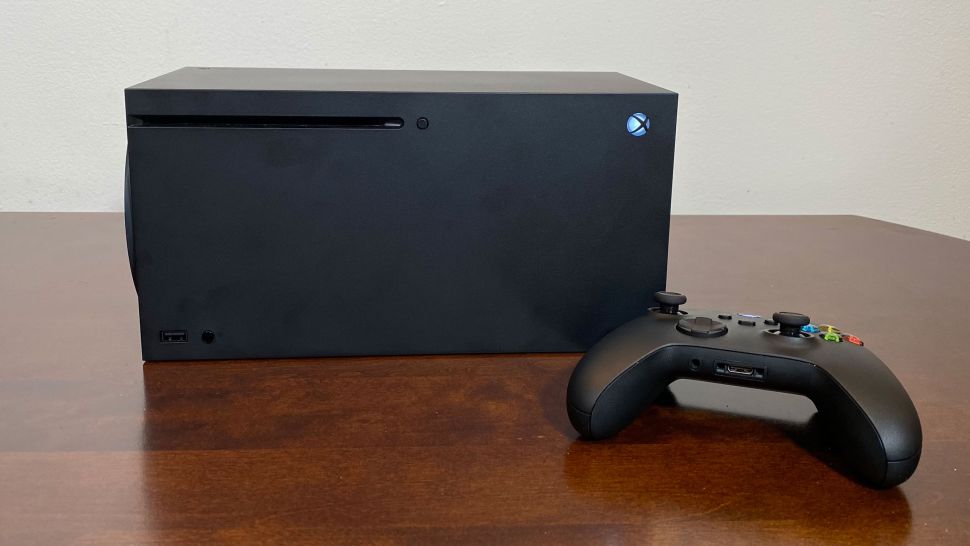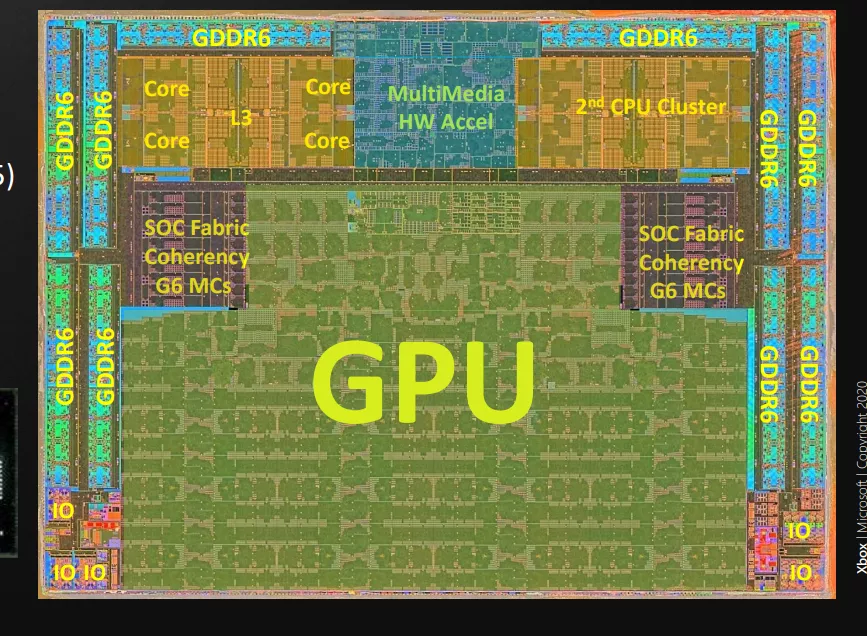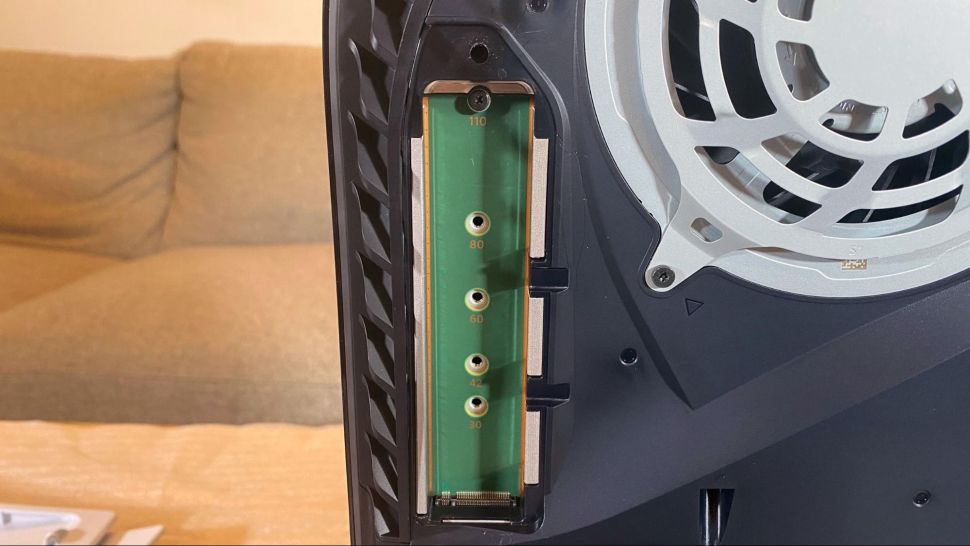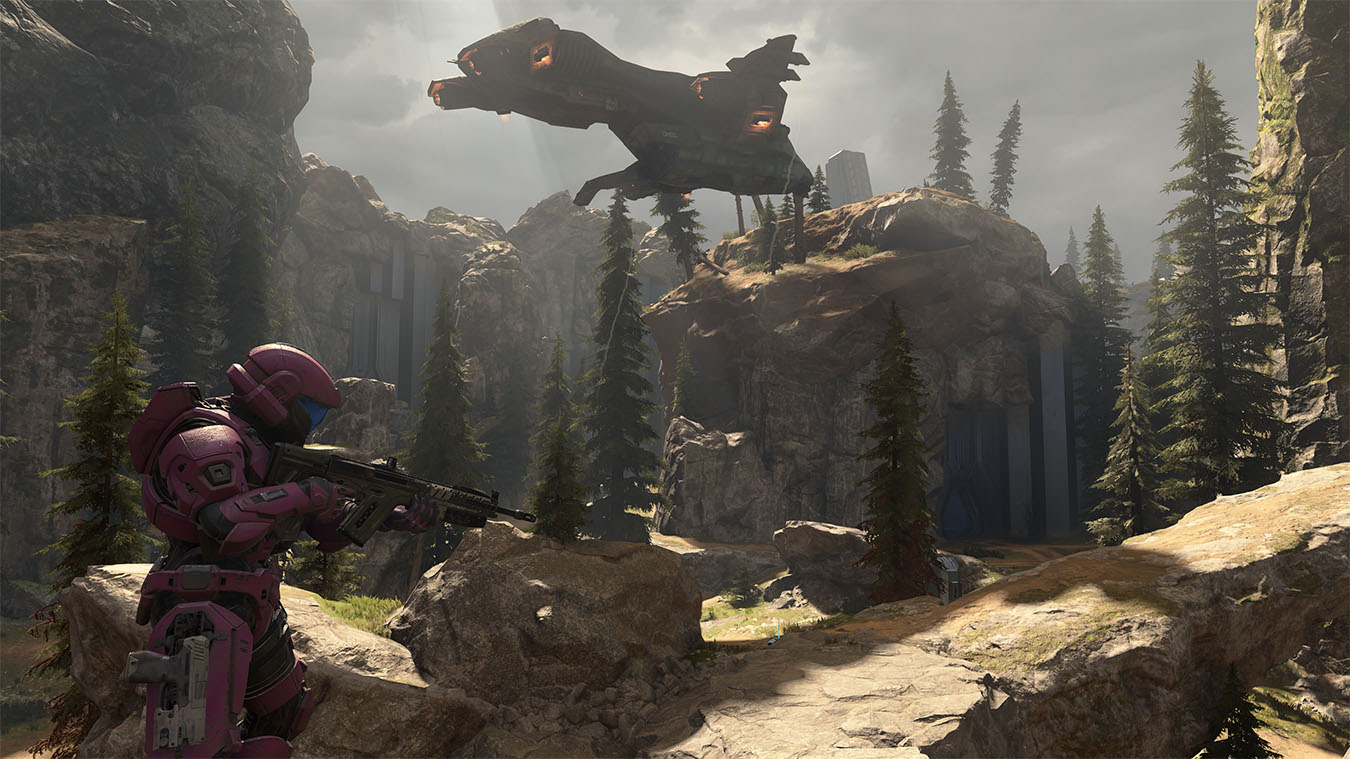A Year with PlayStation 5 and Xbox Series X/S: Pandemic Demand and Different Business Models
So much was different this time around.
One year ago today, (Nov. 10, 2020) Microsoft launched the Xbox Series X and Series S, kicking off the current gen of console gaming. Two days later, Sony countered and released the PlayStation 5. And what a year it's been — if you could find one.
The typical console retrospective goes over the games that came out, the features that were added, and the accessories and special editions that were released. But the dominating narrative over the last 365 days for both Xbox and PlayStation has been whether or not you could get one.
That's not to say there haven't been games making the new consoles worth it. Despite several pandemic-related delays, both Xbox and PlayStation saw big-name exclusives as well as cross-platform releases alongside the PC and Nintendo Switch. Many games have been released on older consoles as well, which isn't unexpected in a transition year.
But as we move into 2022, and these consoles leave their infancy, the training wheels are coming off. Here's what the first year of the Xbox Series X, Series S and PS5 brought us.
Xbox Series S and X: More Like a PC
Microsoft took a somewhat radical approach and released two rather different consoles, the $299.99 Xbox Series S and the $499.99 Xbox Series X, immediately signalling that it was starting to approach a PC gaming model. Micrsoftoft has two different machines with different hardware capabilities playing the same games. Both use 8-core AMD Zen 2 CPUs (though the Series X has slightly faster speeds), but the Series X uses 52 RDNA 2 GPU compute units while the Series S uses 20 compute units. Additionally, the more powerful system has 16GB of GDDR6 RAM (compared to 10GB on the Series X).
Microsoft has called its systems "the only next-generation consoles with full hardware support for all the RDNA 2 capabilities." We're not sure precisely what it's talking about, particularly with the wide gap in capabilities on the two versions. Then again, it made that statement before the PlayStation 5 launch, so at the time it was the only console with full RDNA 2 capabilities.
The difference in GPU capabilities meant games on the Series X were playable at up to 60 fps at 4K (and up to 120 fps in some rare cases), while the Series S shoots for 60 fps at 1440p. Of course, this all depends on how the game is optimized. But those differences didn't seem to matter much. Both systems were often sold out, with gamers reaching for whichever next-gen experience they could get.
The other area where Xbox tried to match the PC experience was in backward compatibility. The new consoles play nearly every Xbox game going back to the original Xbox. Some older games even get increased performance via an FPS boost, as well as HDR support.
In terms of its impact on the greater hardware ecosystem, Microsoft's work with SSDs may leave the greatest mark. Microsoft's Velocity architecture, with 2.5GB per second of I/O throughput, proved to be blazingly fast. It's also the secret sauce behind Quick Resume, which lets players keep multiple games suspended at once.
DirectStorage, a key part of the Velocity Architecture, was announced for Windows 11 this year. That's what lets the new Xboxes load assets from the SSD and ease the pipeline to the GPU, as well as speed up loading times. This will put some PCs in feature parity in that regard. Auto HDR, which started on the Series X and Series S, will also make it to Windows.
Get Tom's Hardware's best news and in-depth reviews, straight to your inbox.
Xbox also capitalized on the Series X's meme status. As soon as it was unveiled, people joked that it looked like a refrigerator. It did ship some full-sized fridges to influencers, and in October it debuted a $99.99 mini fridge that looks like the console. Like the actual console, pre-orders of the fridge sold out almost immediately, with some scalpers listing them on eBay at radically inflated prices.
PlayStation 5: A More Traditional Approach
Sony took a different track. Two days after the Xbox launch, it released the PS5 with one set of specs, as is usual. The only choice was whether or not you get an optical disc drive. The PS5 with a disc drive is $499.99, while the all-digital edition is $399.99.
On paper, it's a bit weaker than the Xbox Series X. It has an 8-core/16-thread Zen 2 CPU, but with slightly slower clock speeds than Microsoft’s implementation. The RDNA 2 GPU has 36 CUs, though they run at higher clocks than the Series X. Both consoles have 16GB of RAM, but Sony's 825GB SSD falls between the 512GB on the Series S and 1TB on the Series X. In our early tests, we saw the PS5 pull more power than the Series X.
Like the Xboxes, Sony's console flew off the shelves. Sony occasionally used its own digital lines to let potential customers buy one directly, and it's currently signing up users for a chance to get one during what promised to be a very busy holiday season.
Sony also tossed a nod to the world of PC gaming in the form of an expandable SSD. While Microsoft's partner Seagate sells proprietary modules that plug into the back of the Xboxes, Sony lets you remove the side panels, unscrew an access door and put in a standard PCIe Gen4 SSD on your own. The only catch is it needs to meet read speed and capacity requirements and the physical size — including a recommended heatsink — must fit within the allotted space.
Since Sony enabled SSD upgrades in September, many manufacturers, including Samsung and TeamGroup, released drives intended for the PS5. Samsung for instance made a version of the 980 Pro with a heatsink it says was designed for the console. You could of course add your own heatsink to an SSD, as long as it fits.
There was also a very minor PS5 hardware revision in its first year. Newer versions have a smaller heatsink and make it easier to remove the screw that holds in the stand. Some tests have suggested that the new cooling keeps the SoC cooler, though the GDDR6 memory may run a bit hotter.
Sony's New Looks and Controller
While Microsoft iterated with its Series X and S controller, which is similar to the Xbox One's controller, Sony went all out with DualSense. That controller features improved haptics, adaptive triggers, a touchpad, microphone and light bar. This delighted us in Astro's Playground, the PS5's pack-in game, but response has been mixed since. Sony-published games tend to have better implementations of the controller's features (see Returnal, Ratchet & Clank: Rift Apart and Spider-Man: Miles Morales), but plenty of third party developers have adopted it, and it showed up in No Man's Sky, Control and Deathloop, among others.
The PS5's look was initially divisive and, frankly, it still is. It's big and tall and very white. While Sony has made red and black controllers and a black headset, it still hasn't produced alternate color sideplates to make your console anything other than white. Dbrand, which makes skins for electronics, released "Darkplates" in early 2021, but then pulled them in October when Sony threatened legal action. (It probably didn't help that Dbrand taunted Sony's lawyers.) Dbrand has since released a new version of its Darkplates with different ventilation and LED light strips.
Supply, Demand and Launching During a Pandemic
One year into these two (or three) consoles' lifespans, plenty of people are still waiting to get their hands on one. A cottage industry of publications, Twitter accounts, influencers and YouTubers have popped up to track every restock as gamers who want the latest and greatest fight to walk away with one.
One reason for this is a silicon shortage that is part of global supply chain issues. AMD, which makes the chips for both Xbox and PlayStation (and is a big customer of TSMC), has been heavily affected.
According to Video Games Chronicle, Xbox boss Phil Spencer told The Wrap at an event in September that "we’re working hard to bring [the consoles] to market but it’s going to be a challenge that we’ll work through for quite a while.”
In Sony's Q2 2021 results, it stated that "several factors are significantly impacting the supply of the product such as the disruption of the global distribution supply chain and limitations on the supply of components, especially semiconductors," though it would not be making changes to its sales forecast for the fiscal year.
In early November, Nintendo cut its full-year forecast for sales of its Switch console due to chip shortages affecting production. The Switch runs on an ancient (by silicon standards) Nvidia Tegra X1. Sony and Microsoft are by no means alone in this situation. It's also a problem in appliances, cars and other non-video game sectors. Not to mention, finding a decent graphics card at relatively sane prices remains virtually impossible.
AMD CEO Lisa Su was noncommittal on when exactly the chip squeeze would let up. "I would say it gets better next year," Su said in an interview at Recode's Code Conference in September.. "Not immediately, but it will gradually get better as more and more plants come up… We're an industry that just takes a long time to get anything done." She said a new plant could take anywhere from 18 to 24 months, with plants being put into production about a year ago. So it might take "a couple of quarters" for those plants to come online, nevermind getting the chips into a PS5 or Xbox in a retail store.
But not all of this is about the global supply chain. While it's an important aspect, Sony and Xbox just may not have been ready for the demand in the first place, Mat Piscatella, executive director for games at the NPD group, told Tom's Hardware. And then that compounded with other issues.
"What we're really looking at here is demand that has exceeded pre-launch expectations, with an inability to adjust component supply in a way that would allow for production to be ramped up to meet that demand," Piscatella said. "It's not necessarily that the market has less supply than was initially planned for, but rather that there aren't enough surplus components available in the market needed to make enough consoles to meet the heightened demand."
Another potential issue has been scalping: people or bots quickly buying up supply and then reselling them for a profit. As of this writing, PlayStation 5 consoles are showing up on eBay with "Buy it Now" prices over $800, and the current average price on sold listings during the past month was $782, with an upward trend as we head into the holiday season. In early October, the PlayStation 5 average sold price on eBay was $750, but it's now almost $820.
A number of stores, including Best Buy and GameStop, have occasionally limited the consoles to customers enrolled in membership programs. Sony is currently taking sign-ups to attempt to let customers buy from a limited stock directly during the holiday season, with invites based on "previous interests and PlayStation activities."
The one thing that can solve this conundrum? Making more consoles, which will clearly take time. But people want their consoles now, for the holiday season and while the pandemic lingers.
During the thick of the Covid-19 pandemic, when the PS5 and Xbox Series X and S launched, people were looking for ways to spend their time. According to Piscatella, the video game industry benefited from a lack of experiential spending like going to sporting events or travelling. 79% of America played video games in 2020, and 76% have in 2021, he said. And they're putting in longer gaming hours.
"So, you have a more engaged video game customer base, many with surplus dollars to spend on entertainment, combined with a new console launch," Piscatella said. "A set of circumstances we've never seen in the space, to put it mildly."
The Games We Played
When systems launch, critics (myself included) tend to go heavy on the specs, a limited launch library, and perhaps the UI. There are two things that make or break a console: the exclusive games, and where your friends play.
Sony and its several in-house studios have proven over and over again that they can make powerhouse exclusives worth buying a console for. And the PlayStation 5 has benefitted from that, launching with Spider-Man: Miles Morales, Sackboy: A Big Adventure, Demon's Souls and Astro's Playroom, with Ratchet & Clank: Rift Apart, Returnal, Final Fantasy VII Remake Intergrade and the console version of Deathloop (it's also on PC) coming later. Some of those, like Spider-Man: Miles Morales and Sackboy, were also on PS4. And we also know what to look forward to, like Horizon Forbidden West and God of War: Ragnarok.
"The exclusive titles yet to come are sure to be some of the best of the generation on any platform," said Andrew Borman, digital games curator at the Strong National Museum of Play in Rochester, N.Y.
Microsoft in contrast has been on a studio buying spree. It launched the new Xboxes without any exclusives, instead relying on improved performance, a huge back catalog and Xbox Game Pass to bolster the new hardware. (Halo Infinite was delayed to December 2021, missing the original launch window by more than a year.)
Microsoft also had Smart Delivery, which would let you buy a game on Xbox Series X, Xbox Series S, or even Xbox One and make sure that when you eventually updated — or played on a different system — you got the right version of the game. It's proven useful for a bit, especially while the newer systems are harder to find.
The first Xbox exclusive of this generation came in the form of Bloober Team's The Medium, though that has also been on PC and was released on PS5 in September. Throughout the year, however, the lineup was plumped up with Microsoft Flight Simulator (which launched on PC months earlier) and Forza Horizon 5. Halo Infinite will launch at the end of the year (and will also launch on the older Xbox One). If one game is likely to be a juggernaut for the Xbox Series X and Series S, it's likely to be Halo.
Microsoft's studio shopping may take a bit to pay off, but we know that Senua's Saga: Hellblade 2 will eventually hit the system, while Bethesda's much-anticipated space RPG Starfield is slated for November 11, 2022. There's also Arkane's Redfall next summer and the survival game S.T.A.L.K.E.R. 2: Heart of Chernobyl reportedly coming in April 2022.
Microsoft's exclusives are also all on PC, the other market that the company aims for with Windows. If you're a PC gamer and want a console on the side, that makes the PlayStation 5 a better companion if you want Sony's exclusives. Many third-party games, like Call of Duty: Vanguard or NBA 2K22 can be played on either console or PC.
But Xbox Game Pass proved its worth to many, especially during the pandemic when gamers wanted more new games to try than ever. Microsoft's titles launch on the service, and Xbox Game Pass Ultimate covers both PC and Xbox.
"For Microsoft, it is hard to ignore the importance of Game Pass," said Borman. "Having titles available, in many cases on Day 1, is huge, especially when there are so many forms of entertainment trying to pull users away from their console. Much as I’ve discovered plenty of great TV shows and movies available on subscription services, I’ve tried plenty of games that I wouldn’t otherwise have played simply due to it being available with a subscription."
In a face-off between the two consoles I wrote shortly after their launches, I pointed out that "those who prefer PlayStation Studios titles would still be best off going with the PS5," despite the Xbox Series X's strengths in hardware, upgradeability and Game Pass. For now, it seems the experts still expect that to be somewhat true.
How Much Can You Judge in a Year, Really?
Of course, one year is a short time in a console's lifespan. The PlayStation 4, for instance, started shipping in 2013. These life cycles are coming close to ten years, albeit with revisions in between like the PS4 Pro and the Xbox One X.
In October, Sony's Q2 fiscal report showed 3.3 million PS5 consoles sold, with reports claiming 13.4 million PS5's being sold worldwide since launch. In July, Microsoft CEO Satya Nadella said the Xbox Series X and Series S "are our fastest-selling consoles ever with more consoles sold life-to-date than any previous generation." Unfortunately, he declined to put an exact number on how many consoles were sold.
While gamers love to pit the two against each other, can we tell anything about a new generation from year one?
"First year sales can be important for momentum, but it is never a guarantee that a console will continue that success," said Borman, the gaming historian. "For some consoles, sales remain fairly steady throughout their lifespan. Others fail to hold onto the record-breaking pace following launch." He cited the Sega Dreamcast, which set sales records in North America, but faced a sharp decline against the PlayStation 2. (Sega ultimately left the console business, but still makes games.)
According to Piscatella of NPD, the first year can often set expectations for lifetime sales — or at least, it could in a more normal climate when it comes to supply and demand. But there are also events that change those ideas, like when Guitar Hero and Rock Band helped sell more consoles as the music genre created a craze. Even one game from a popular franchise, like Grand Theft Auto, increases demand, he said. But the first year is about proving your console is viable in the marketplace.
"In the current environment, both new generation consoles have proven to be market viable," Piscatell said. "However, there are so many factors at play, both known and unknown, that make constructing a long-term prediction or forecast dicey, at best. Again, we're not in a normalized demand environment, and we may not know what that true demand looks like until mid-2022 or even into 2023. No one knows for sure."

Andrew E. Freedman is a senior editor at Tom's Hardware focusing on laptops, desktops and gaming. He also keeps up with the latest news. A lover of all things gaming and tech, his previous work has shown up in Tom's Guide, Laptop Mag, Kotaku, PCMag and Complex, among others. Follow him on Threads @FreedmanAE and BlueSky @andrewfreedman.net. You can send him tips on Signal: andrewfreedman.01
-
Heat_Fan89 It was a trudge but I managed to score a Series S and X and a PS5 disc version. This situation is only going to get worse with supply shortages.Reply -
cryoburner Reply
In terms of hardware sales, the PS5 sold roughly the same number of units as the PS4 during their first four quarters on the market, with both selling around 13.5 million units worldwide. Microsoft doesn't release specific sales numbers for their consoles anymore, but has stated on multiple occasions that the Series S/X have been selling faster than their prior console launches, with it being estimated that they have sold somewhere around 8 million units during that same period. So, it's not like supply has fallen significantly behind what they had planned. They undoubtedly reserved their chip production years in advance, after all, so chip shortages are unlikely to be that much of a concern.Heat_Fan89 said:It was a trudge but I managed to score a Series S and X and a PS5 disc version. This situation is only going to get worse with supply shortages.
There was likely an increase in demand, however, due to people spending more time at home, particularly last year. And while their supply of components has likely met what they had planned in advance, they have likely been unable to increase supply beyond those initial plans. While console availability might still be tight this holiday season, I would expect it to get better, unless there happened to be another major pandemic surge or something that were to keep a large portion of the population at home. But even then, I think businesses and medical institutions should be more prepared to minimize disruptions at this point.
The situation with graphics cards for PCs is a bit different, since much of the current shortages are the result of crypto mining demand, similar to what happened a few years prior. So card shortage recovery will be more dependent on mining profitability, or the lack thereof. -
blppt By the time I actually find a PS5 (non digital edition) in stock at a local B&M store, we'll be months away from PS6.Reply -
TerryLaze Reply
Nintendo is selling people n64 games as a $35 premium subscription..what more do you want.elementalRealms said:~Meanwhile : Nintendo is sleeping.
It's not like nintendo has some magical way of making more consoles than ms or sony. -
VforV I stopped looking for a PS5 and upgraded my PC when BTC was lowest this year and the prices too, and that proved to be the best decision so far.Reply
Seeing Sony will release even more exclusives on PC, reaffirms that decision. I know those games will look and play better on my PC (not to mention mods).
Now if they would only bring Gran Turismo 7 and all the Soulsborne games to PC, that would be amazing. It will probably never happen, with GT7 at least, but I bough a PS3 only for GT5 and GT6 and I bought a PS4 Pro only for Bloodborne, so those games can still "force" me to buy a PS5 eventually LOL. -
gggplaya Replycryoburner said:The situation with graphics cards for PCs is a bit different, since much of the current shortages are the result of crypto mining demand, similar to what happened a few years prior. So card shortage recovery will be more dependent on mining profitability, or the lack thereof.
Bitcoin just hit an all time high of $68,000. I don't think that's slowing down anytime soon. -
TerryLaze Reply
Well, bubbles are called bubbles because they can pop at any time...gggplaya said:Bitcoin just hit an all time high of $68,000. I don't think that's slowing down anytime soon.
Not saying that it will happen soon or that it will happen but it can happen extremely fast if and when.







